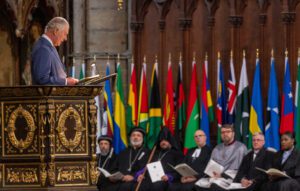In the summer of 2014 a panel discussion titled “Partitioned Voices, Divided Tongues?” held in Delhi, invited the panellists to think of “What happens to a language when its land and people are partitioned?”
In the organizers’ scheme of things, this comprised Urdu, Punjabi, Sindhi and Bengali as languages that have undergone “the experience” of Partition. Each panellist represented, for the most part, a particular language. At the heart of the panel’s premise was the assumption of non-physical ramification of Partition – that is, the intangible costs incurred in the process.
The discussions explored whether Partition itself was a communicable experience; in other words, whether trauma is indeed expressible in words. Do we have words for instance to articulate the marginalization of Bengali in East Pakistan that led to the making of Bangladesh, the minoritization of Urdu in India as well as the hegemony of Hindi?
Were languages capable of bearing the burden of words that could capture the enormity of Partition? Words such as bantwara or vibhajan (both connoting division in Hindi); ladpalayan (migration and exodus) or virhango (separation in Sindhi) appear too quotidian to fully capture the trauma of this experience. The incommensurability of language and experience characterises the human condition, and may not be by itself a unique situation. However, loss or inadequacy of words accompanied – at the time of Partition –other forms of tangible and intangible losses such as home, territory, faith, friendships and at times, self-esteem. It is therefore clear that the relation between partition and language is complicated by a range of other experiences.
Do we have words for Partition?
In her discussion of the inarticulacy of the partition experience, panellist, Urvashi Butalia tellingly pointed out the frequent use of gibberish in some literary and oral testimonies of Partition. The discussion then veered towards specific languages such as Urdu, Sindhi and Bengali and the extent to which they were morphed, abandoned or divided during Partition.
As one of the panellists, I shared a story titled Oxen written by Muhammad Daud Baloch. Narrated by a farmer in rural Sindh, Pakistan. The story observes how beasts of burden also need to understand the language to carry out orders; Allah knows what happens to the language of humans when they are wrenched out of their history. The story captures the predicament of the uprooted – the Punjabi migrants who came from India to the new nation of Pakistan as well as the Sindhi Hindus who had left Sindh to go to a separated India.
Early one morning, I left the plough and leash in the field, and marched towards Khairuddin’s field with the three animals. I had barely gone halfway when I saw Khairuddin Punjabi coming towards me with my oxen. When we both stood facing each other, Khairuddin said to me that my oxen didn’t understand his language although he had whacked them so hard that their skin peeled off. (Oxen, Muhammad Daud Baloch)
Were languages also divided, like land? The classic example would be of Hindi and Urdu – the first associated with Hindus and the other Muslims – which, having been bifurcated and ‘communalized’, share the same vocabulary and to a certain extent syntax.
Aijaz Ahmad posits that ‘Independence and Partition were doubtless key watersheds in the chequered history of the Urdu language and its literature, in the sense that the thematics of this literature as well as reading and writing communities were fragmented and recomposed drastically in diverse ways” (1996: 191).
However, this process was already evident in the years prior to partition. In fact its roots lie in colonial technologies on which the post-colonial realities came to be fashioned. Choosing between ‘Urdu’ and ‘Hindi’ as a new form of colonial enumeration did not exist prior to the nineteenth century. This either/or framework had sown, arguably, the early seeds of division that was consolidated further by Partition.
We also know from vast, existing scholarship on Hindi-Urdu, that the divisions that appear so clearly defined today cloud the fact that pre-colonial multilingual cultures were not invested with hardened communalized identities. (See Orsini, 1).
In fact the question of whether language is divisible may be preceded by asking what is a language, and what are its borders and boundaries? This article does not provide the scope to dwell on this issue in great detail; however, I have attempted to demonstrate through a non-academic and personal experience, the changing status of language as a practice of both border-making and border-crossing.








